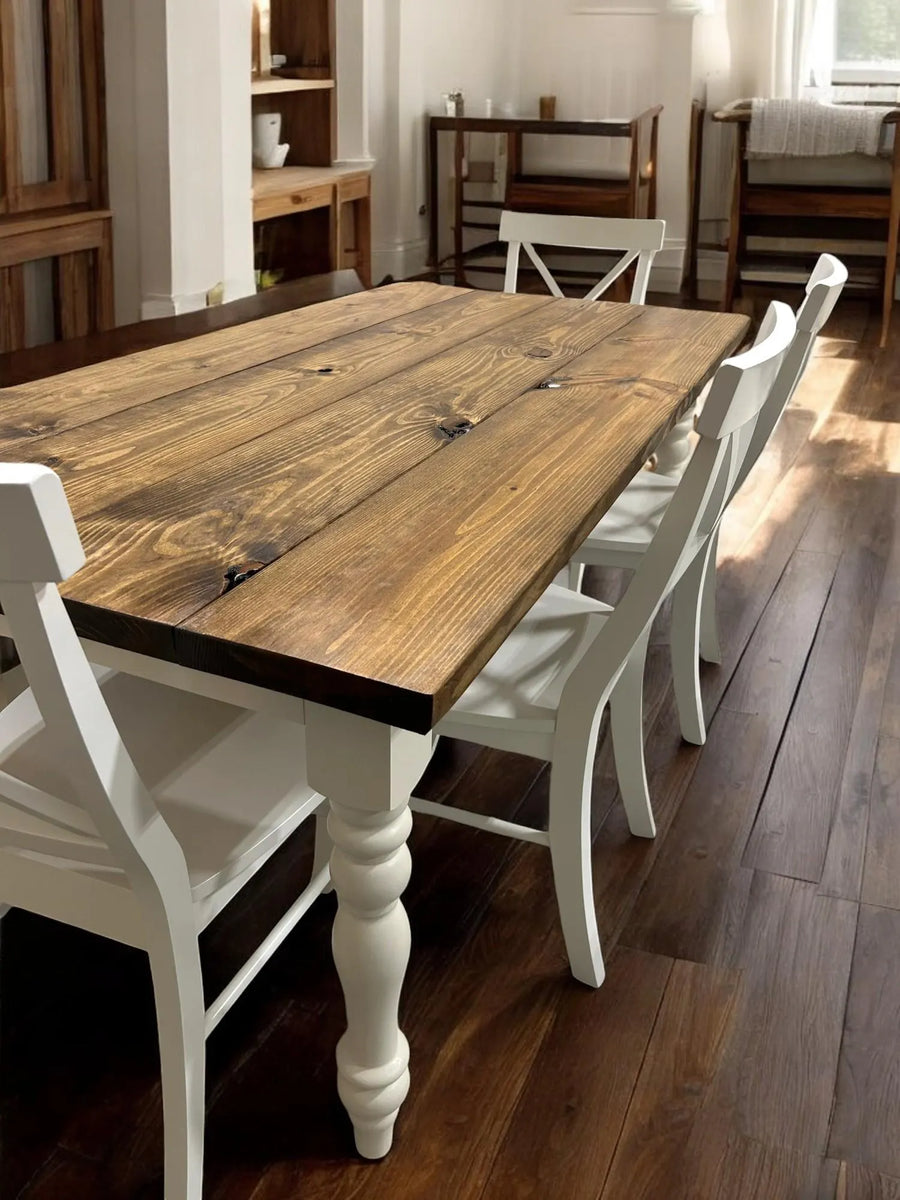Customize Your Table with Unique Dining Table Legs Wood Creations
Customize Your Table with Unique Dining Table Legs Wood Creations
Blog Article
Secret Aspects to Bear In Mind for Dining Table Legs Timber Choices
When picking timber for dining table legs, several crucial aspects call for careful factor to consider to guarantee both functionality and visual appeal. The choice of wood type, identified by its toughness and distinct grain patterns, plays an essential role in the general layout and long life of the piece.
Wood Types and Qualities
When choosing timber for eating table legs, it is important to recognize the unique features of numerous wood kinds. Different timbers use distinctive advantages and drawbacks, affecting both the durability and aesthetic charm of the finished product.
Oak, recognized for its impressive toughness, additionally includes a famous grain that can add character to the table. Cherry wood, with its rich color that grows over time, provides a luxurious appearance yet might require more maintenance to avoid scrapes.
On the various other hand, softwoods like pine and fir are much more budget friendly and much easier to deal with, yet they are much less resilient than hardwoods. Pine is lightweight and features a cozy, rustic appearance, making it a preferred choice for casual dining setups. It is much more prone to scratches and dents.
Understanding these characteristics will aid in making an informed choice to make sure the legs of the table meet both practical and aesthetic needs.
Grain Patterns and Aesthetic Appeal
The wood's grain is not merely an aesthetic attribute; it conveys a distinct personality and beauty to each piece. Various wood types display unique grain patterns, varying from the straight lines of maple to the intricate swirls of oak and the striking number of walnut.
Additionally, the alignment and range of the grain can affect the viewed size and elegance of the table. For example, larger, more noticable grains may lend a bold, significant result, while finer, subtler grains can produce a refined, understated look. Additionally, the completing process can better boost these patterns, stressing the natural elegance of the wood and drawing out rich shades.
Inevitably, the choice of grain pattern ought to harmonize with other style elements, such as the table top and bordering furnishings, making certain a natural visual that boosts the eating experience. Thoughtful choice of timber grain not just adds to the table's elegance however additionally reflects the proprietor's preference and style.
Sturdiness and Stamina
The sturdiness and toughness of eating table legs are vital factors to consider for guaranteeing long life and security in any type of eating space. Choosing the right wood is vital, as different species display differing levels of strength.

Ultimately, buying premium wood and robust building and construction methods will certainly yield a table that stands the examination of time, while giving a trusted structure for plenty of meals shared amongst friends and family. Focusing on toughness and stamina guarantees that your eating table remains useful and aesthetically pleasing for years to find.
Maintenance and Treatment
Correct maintenance and care are vital for protecting the sturdiness and toughness of dining table legs made from wood. Regular cleansing is important; using a soft, wet fabric makes sure that dust and particles do not collect, which can lead to scrapes and my explanation dullness. It that site is recommended to avoid rough chemicals or rough products that can harm the finish.
In addition, using an ideal timber polish or wax occasionally can help preserve the sheen and shield the wood from dampness and spills. Nonetheless, it is important to adhere to the manufacturer's referrals concerning the kind of item to utilize, as specific surfaces may respond adversely to particular chemicals.
Moisture and temperature level changes can likewise impact wooden table legs, triggering them to warp or fracture. It's ideal to put the table far from straight sunlight and warm resources. Attending to these without delay can avoid further damage. if the table legs have any type of damages or scratches.
Finally, occasionally inspecting the joints and screws for tightness is very important to preserve architectural integrity (Dining Table Legs Wood). By sticking to these upkeep practices, home owners can ensure their wooden table legs stay useful and enticing for several years to find
Ecological Considerations
When selecting wood for eating table legs, it's vital to take ecological considerations right into account. The sourcing and sustainability of wood are vital in decreasing ecological influence. Choosing for wood from certified resources, such as those backed by the Woodland Stewardship Council (FSC), guarantees that the lumber is gathered properly, advertising woodland conservation and biodiversity.

Furthermore, neighborhood sourcing of timber minimizes transportation emissions, supporting regional economies while reducing environmental influence. It is also recommended to be familiar with the timber's treatment and finishing processes, as particular chemicals can be damaging to both human wellness and the atmosphere. By prioritizing sustainable wood options, webpage customers can add to environmental conservation while appreciating the longevity and elegance of their dining table legs.
Conclusion
In final thought, choosing timber for eating table legs requires careful factor to consider of numerous variables, consisting of wood kinds, grain patterns, and toughness. Maintenance demands and ecological sustainability additional impact wood selections, emphasizing the importance of sourcing from licensed or recovered products.
When selecting timber for eating table legs, a number of crucial variables warrant mindful factor to consider to guarantee both capability and visual allure.Proper upkeep and treatment are crucial for maintaining the durability and stamina of eating table legs made from timber.When picking wood for dining table legs, it's essential to take environmental considerations right into account. By focusing on lasting wood options, consumers can add to environmental conservation while appreciating the longevity and charm of their eating table legs.
In conclusion, choosing timber for dining table legs demands cautious factor to consider of various aspects, including timber kinds, grain patterns, and toughness. Dining Table Legs Wood.
Report this page